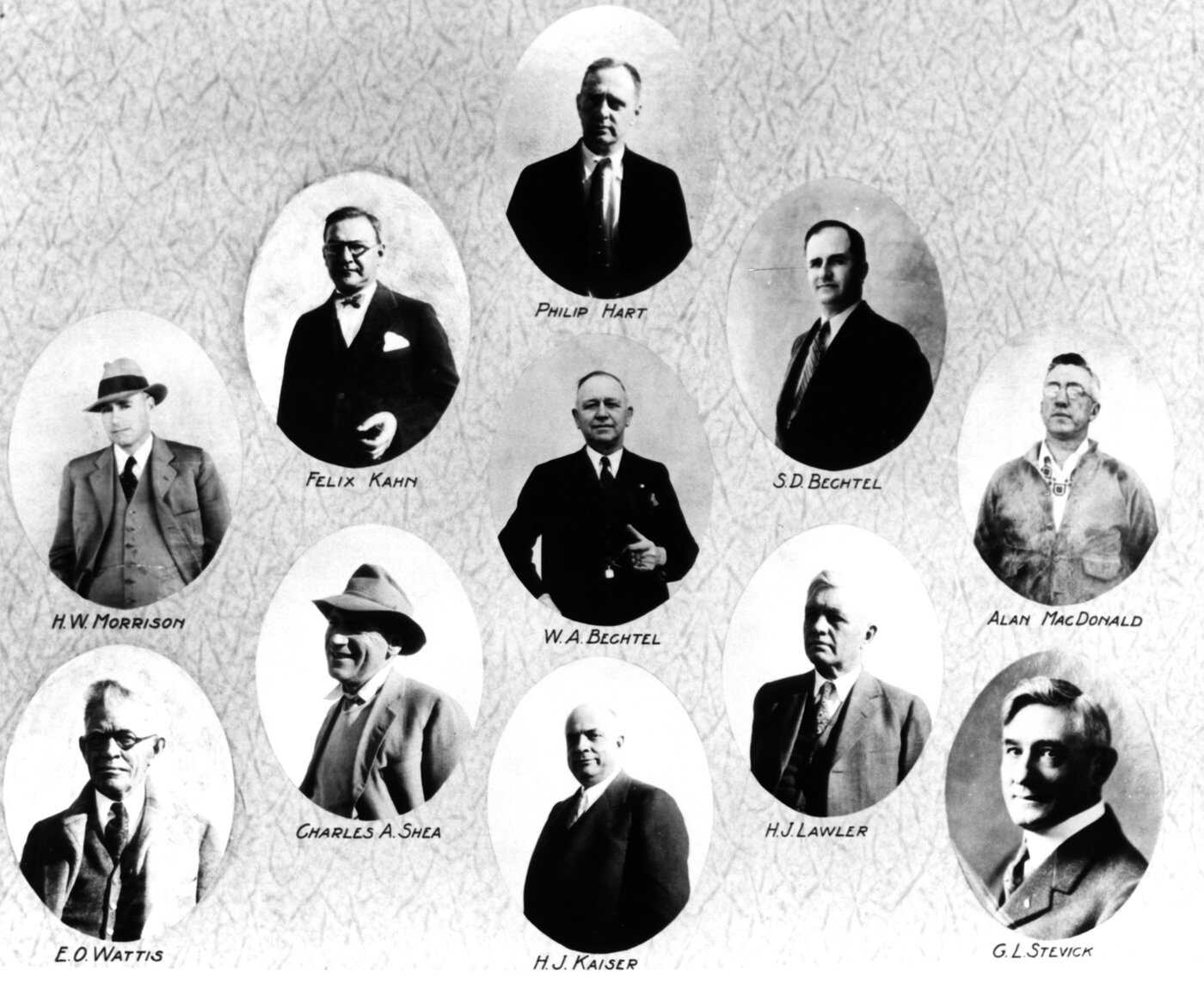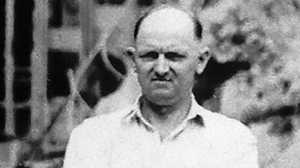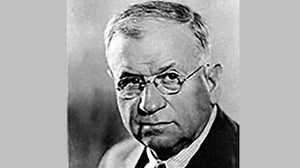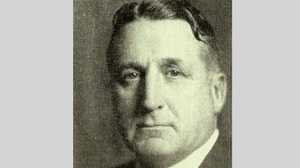The Men of Six Companies

As proposed, the building of the Boulder Dam would constitute the largest public works project in the history of the United States to date. Construction and engineering interests were eager to leave their stamp upon the finished product. They were weary, though, of the five-million dollar performance bond the government was demanding from whomever was awarded the contract. That staggering amount seemed to pose a financial risk beyond the means of any one construction company.
The coming together of what became Six Companies is a story of the melding of ambitions of maverick individuals, each driven by a desire to transform the emerging West. Each of them knew that success on this project would allow them to step out from the shadow of Eastern financiers and industrialists.
The idea to form one company out of a union of various construction and engineering firms came from Harry Morrison of the Morrison-Knudsen construction firm of Boise, Idaho. Morrison had forged a profitable working relationship with Utah Construction and decided they, too, should be in on the Black Canyon — as it was called at the time — project. Added to the mix was Charlie Shea, a seat-of-the-pants builder of tunnels and sewers who liked to brag, “I wouldn’t go near a bank unless I owed them at least half a million dollars—that way you get respect.” Half a million was just the amount Shea pledged toward the performance bond. Along with his colorful and boisterous personality, Shea possessed the necessary skills and connections to further the project. He enlisted the interest of the Pacific Bridge Company and Felix Kahn of the San Francisco firm, MacDonald and Kahn. Meanwhile, Harry Kaiser, an ambitious young road builder from Oakland, California, and his mentor Warren A. Bechtel, a powerful old-line San Francisco contractor had become interested in the project. Kaiser’s experience in the working world extended back to when he dropped out of school at age 11. The elder Bechtel had developed an admiration for Kaiser’s work ethic and drive. It was Bechtel who suggested that he and Kaiser join forces with the alliance being formed by Harry Morrison. Felix Kahn coined the name Six Companies.
Once the players were in place and the requisite performance bond funds were available, all attention turned to the submission of a winning bid. The scoop from inside Washington was that the Reclamation Service was not going to waste time with bids designed to pad the pockets of any private firms. Their engineers had estimated the cost of the project down to the last dime. The men of Six Companies, at the urging of Harry Morrison, turned to Frank Crowe to come up with a number that would get them the job.
Considered the finest construction man in the country, Crowe adhered to meticulous standards in his work and personal life. With a calculating eye and a keen mind, Crowe presented a bid of $48,890,995. The number fell just $24,000 short of the Reclamation Service’s own accounting, low enough to win the contract for Six Companies.
With the success of the Hoover Dam—the project was completed two years ahead of schedule—the men of Six Companies were emboldened to take on new challenges. Stephen Bechtel, son of Warren and the project’s chief executive following his death, proclaimed, “We’ll build anything for anybody, no matter what the location, type, or size.”
After Hoover Dam, Six Companies stood as a monolithic entity in the new American West. The ensuing decades witnessed their construction of the Bonneville and Grand Coulee Dams, the foundations for the Golden Gate and Bay bridges, numerous canals, tunnels, factories, shipyards, pipelines and refineries in the U.S. and abroad. Six Companies’ construction of Hoover Dam was also significant in that it forged a bond between government funding and private-sector expertise, motivated by the cache of projects of such scale.







